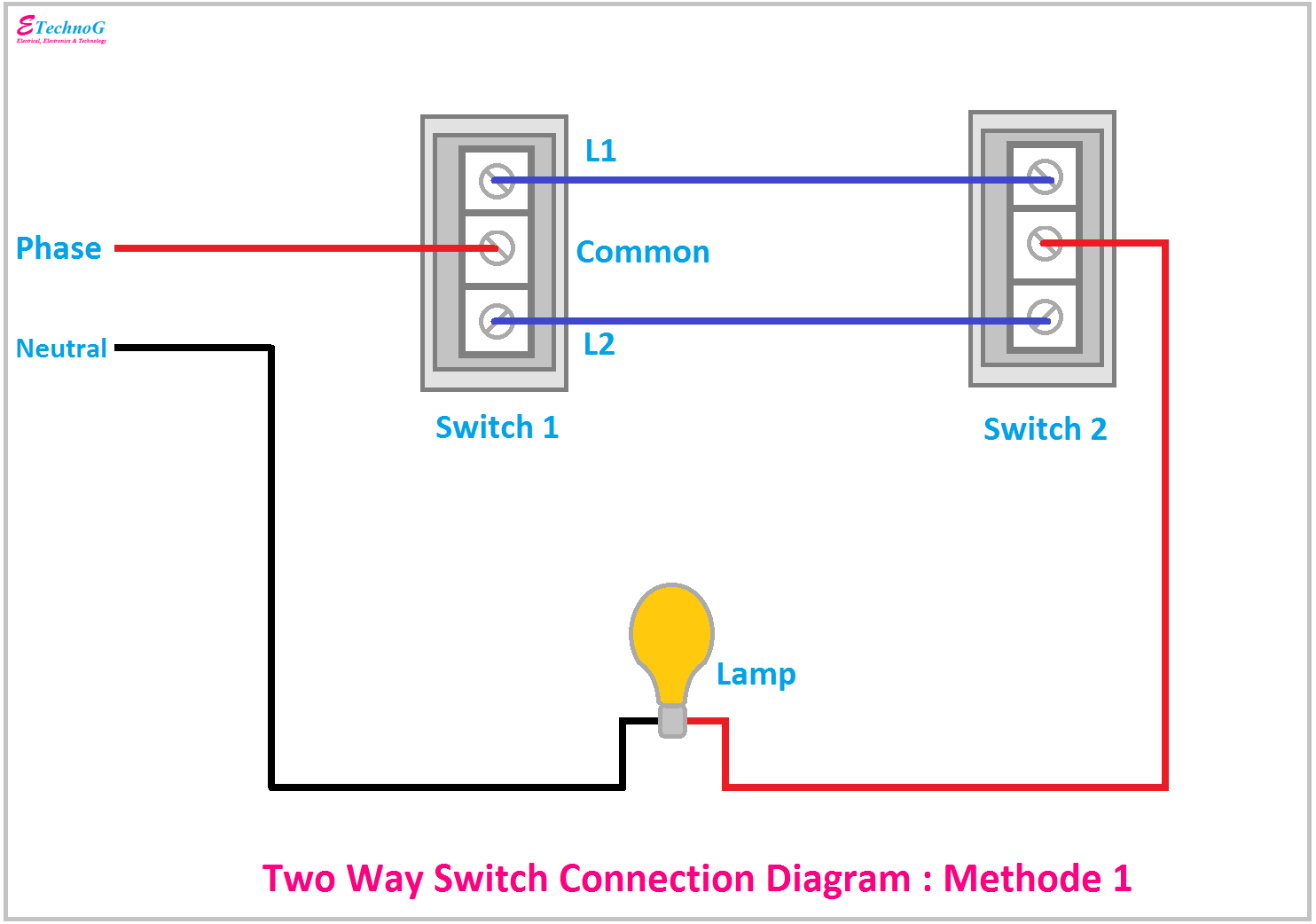

Understanding The Two Way Switch: A Comprehensive Guide
The concept of a two way switch is essential for any modern electrical system. It allows you to control a single light or a group of lights from two different locations, providing convenience and flexibility in your home or workplace. Imagine entering a room and being able to turn on the lights from one switch, only to turn them off from the other switch when leaving, all without having to walk back. This innovative setup not only enhances user experience but also adds a level of safety by reducing the need to navigate in the dark.
Though it may seem like an advanced electrical installation, the two way switch is a relatively straightforward concept that can be understood with a little bit of knowledge about wiring and electrical components. This article aims to break down the intricacies of the two way switch, its advantages, installation process, and some common questions related to its use. Whether you are a seasoned electrician or a homeowner looking to upgrade your lighting system, this guide will serve as a valuable resource.
Additionally, understanding how a two way switch works can empower you to make informed decisions when it comes to your lighting needs. From energy efficiency to enhancing the aesthetics of your space, the two way switch opens up numerous possibilities for customization and control. Let’s delve deeper into this topic to discover what makes the two way switch a vital component of contemporary lighting solutions.
What is a Two Way Switch?
A two way switch is a type of electrical switch that allows control of a light fixture or group of fixtures from two different locations. This is particularly useful in larger spaces such as hallways, staircases, or large rooms where multiple entry points exist. The two way switch is often used in conjunction with another switch to create a circuit that can toggle the light on or off from either location.
How Does a Two Way Switch Work?
The operation of a two way switch involves a basic understanding of electrical circuits. A standard two way switch has three terminals: one common terminal and two traveler terminals. The common terminal is connected to the power source or the light fixture, while the traveler terminals connect to each other through the two switches. When one switch is flipped, it either connects or disconnects the circuit, allowing electricity to flow to the light or cutting it off.
What Are the Benefits of Using a Two Way Switch?
- Convenience: Easily control lighting from multiple points.
- Safety: Reduces the risk of accidents by providing light control at both ends of a hallway or staircase.
- Energy Efficiency: Turn off lights when not in use, minimizing energy wastage.
- Versatility: Suitable for various applications, including homes, offices, and public spaces.
How to Install a Two Way Switch?
Installing a two way switch can be a DIY project if you have a basic understanding of electrical work. Here’s a simplified step-by-step guide to help you through the process:
- Turn off the power supply at the circuit breaker.
- Identify the location for both switches and the light fixture.
- Run electrical cable between the switches and the light fixture.
- Connect the wires to the switches: the common terminal to the power source and the traveler wires to the traveler terminals.
- Connect the light fixture to the common terminal of one of the switches.
- Secure all connections and mount the switches in their respective boxes.
- Turn the power back on and test the switches.
Common Issues with Two Way Switches?
While a two way switch is generally reliable, issues can arise from time to time. Some common problems include:
- Switch not functioning: This could be due to faulty wiring or a defective switch.
- Light flickering: Often caused by a poor connection or a failing bulb.
- One switch controls the light but not the other: Indicates that the wiring may need to be checked.
Can I Use a Two Way Switch with Three-Way Circuits?
Yes, a two way switch can be incorporated into a three-way circuit setup, allowing control from three or more locations. This is ideal for larger spaces where additional control points are necessary. The installation process is similar, but it involves additional switches and wiring. It’s crucial to follow proper wiring diagrams to ensure the circuit functions correctly.
What is the Cost of Installing a Two Way Switch?
The cost of installing a two way switch can vary based on several factors:
- Material Costs: The price of switches, wiring, and other materials.
- Labor Costs: Hiring a licensed electrician versus DIY installation.
- Complexity of Installation: Additional features or modifications can increase labor time and costs.
On average, the cost can range from $50 to $200, depending on the specifics of your installation. It’s always advisable to get quotes from multiple electricians to ensure you receive a fair price.
Conclusion: Why Invest in a Two Way Switch?
Investing in a two way switch can significantly enhance your lighting experience, offering convenience, flexibility, and safety. Whether you are renovating your home or building a new one, incorporating two way switches can make a noticeable difference in how you interact with your space. With proper installation and maintenance, these switches can serve you well for many years to come.
Understanding how to use and install a two way switch empowers you to take control of your lighting needs effectively. It’s a practical solution that can adapt to various environments, making it a worthwhile addition to any electrical system.
Lamb Motors: The Heart Of Automotive Excellence In Hamilton, Alabama
Discovering The Wonders Of Lassen Ale Works Boardroom
Exploring The Enchantment Of Eagles Landing Movies

